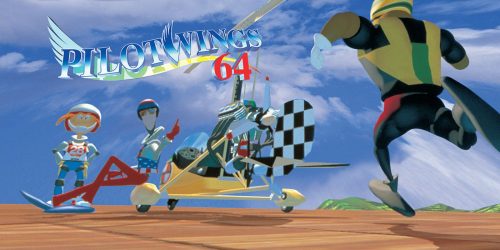DP’s Games Crunch 2019 Part #1
January 9th, 2020
The turn of the decade has prompted me to revive this ‘year in review’-ish article series I began 11 years ago (has it been that long?). The list below catalogues my brief thoughts on the games I completed over the past year.
Rhythm Thief (3DS)
Rhythm Thief feels unfinished. For some mini-games: button inputs don’t match rhythm, sound effects aren’t tuned to backing tracks, and the visuals don’t readily communicate how the player is supposed to act (R21 is a classic example). This is to say nothing of the mismatch between voice acting and text or the off-brand Professor Layton character design.
Space Invaders Extreme (PSP)
I was impressed by Space Invaders Extreme‘s ability to craft distinct gameplay concepts out of simple AI, enemy properties, and layered elements. It’s a superbly tuned game overall. One of my favourite shoot ’em ups. Difficulty needs to be toned down, though.
Groove Coaster (iOS)
An excellent visual concept carries much of this iOS rhythm game. The music is utterly amazing. The frequency of actions on the harder difficulties both erodes the integrity of the gameplay. A good case for stylus-based touch gameplay.
Onimusha (PS2)
A button-mashy Resident Evil-like. The fixed camera perspective obscures the relative distance between enemies and avatar. The similar Ninja Gaiden: Dragon Sword features a more substantial combat system.
Contra 4 (DS)
The spread shot and machine gun are pivotal to success in Contra 4 as the campaign is not tuned around the default pea shooter (mainly due to the layering of enemies making certain sections particularly strict). Each death forfeits the currently held weapon and so a single misstep can cull quite a number of lives. Hence, as mastery rolls forward, the player’s goal becomes one of minimising the aforementioned bumps in the road.
I completed 24/40 of Contra 4‘s challenge levels. The strict design (i.e. enemies everywhere, barely any room to move), inconsistent difficulty within each challenge, and lack of tuning (especially randomised enemy spawns) create a lot of needless repetition.
Super C (NES)
A refreshing antithesis which gets the balance right. Each level does something different with the core run n’ gun gameplay. I’m particularly fond of the Aliens references.
Contra (NES)
Not as polished as Super C and the bad 3D tunnel levels are a pain. Still better than Contra 4.
Mole Mania (GameBoy)
Mole Mania extracts a surprising amount of content out of its humble design space. By the end, the addition of puzzle-meddling enemies and an increased presence of complex, reading-focused puzzles take the lustre off this underappreciated gem. Not as good as Pax Softnica’s other two GameBoy gems, Balloon Kid and Donkey Kong 94.
Wolfenstein RPG + Doom 2 RPG (iOS)
Imagine the original games in a dungeon crawl format where the main gameplay loop is attack-attack-heal. Thoughtless.
Valkyrie Profile (PSP)
Props to Tri-Ace for creating a one-of-a-kind RPG in many respects (aesthetics, narrative, progression structure, combat system). The nuance-driven battle system skews more towards complex traditional RPG than Mario & Luigi. With few tutorials, I couldn’t get my head around some of the finer details of combat (even after hours of online research). Still, the timing-based combat system and frequent additions of new characters and abilities kept me with this one for some 30 hours. It’s a pity then that a major difficulty spike locked me out of the game around two thirds of the way through.
F-Zero X (N64)
I’ve written at length about F-Zero X for my upcoming book Speed Boost, so I don’t have much to say here aside from what I mentioned on Twitter:
After playing F-Zero X on the WiiU VC (which is the 60hz NTSC version), I tried my PAL cart and found that: X Cup and Master difficulty are unlocked from the start; there’s less input delay; and 50hz is super slow. In sum, it feels like a very different game.
Pilotwings (SNES)
Whilst an early technical feat for the Super Nintendo, the hardware restricts the simulation’s realism (and ability to render perspective) obscuring important cues needed to fly proficiently. As such, you often don’t have sufficient information to make informed decisions.
Pilotwings is more a game of landing than flying. The finnicky landing requirements dictate success and failure.
From best to worst vehicle: helicopter, rocket belt, sky diving, light plane, and glider.
Having to complete three missions in a row forces the player to retain more information (challenge complexities) over a longer period of time as they swap between each craft each mission. As such, one of Pilotwing’s main challenges is keeping all of your new learning in your head. Personally, I find that this requirement is a somewhat arbitrary.
Pilotwings 64 (N64)
If it weren’t for Super Metroid, this would be my favourite game of 2019. A number of factors greatly improve the playability of this sequel, namely the 3D rendering (ability to judge depth) and camera system (ability to survey maps pre-flight and adjust the camera mid-flight).
The game structure, where the player stays with the same craft and can repeat missions to improve their score, is conducive to sustained periods of practice where the player can familiarise themselves with the nuances of each challenge. This alteration suits Pilotwings 64’s challenges being longer, more diverse, and more sophisticated than the original game. Overall, the developers struck a good difficulty balance by increasing the skill ceiling, broadening the skill range, and allowing the player to repeat individual challenges.




 Game Design Companion: A Critical Analysis of Wario Land 4 - $7.99
Game Design Companion: A Critical Analysis of Wario Land 4 - $7.99 Level Design: Processes and Experiences
Level Design: Processes and Experiences Speed Boost: The Hidden Secrets Behind Arcade Racing Design - $5.99
Speed Boost: The Hidden Secrets Behind Arcade Racing Design - $5.99 Adventures in Games Analysis: Volume I - $5.99
Adventures in Games Analysis: Volume I - $5.99







